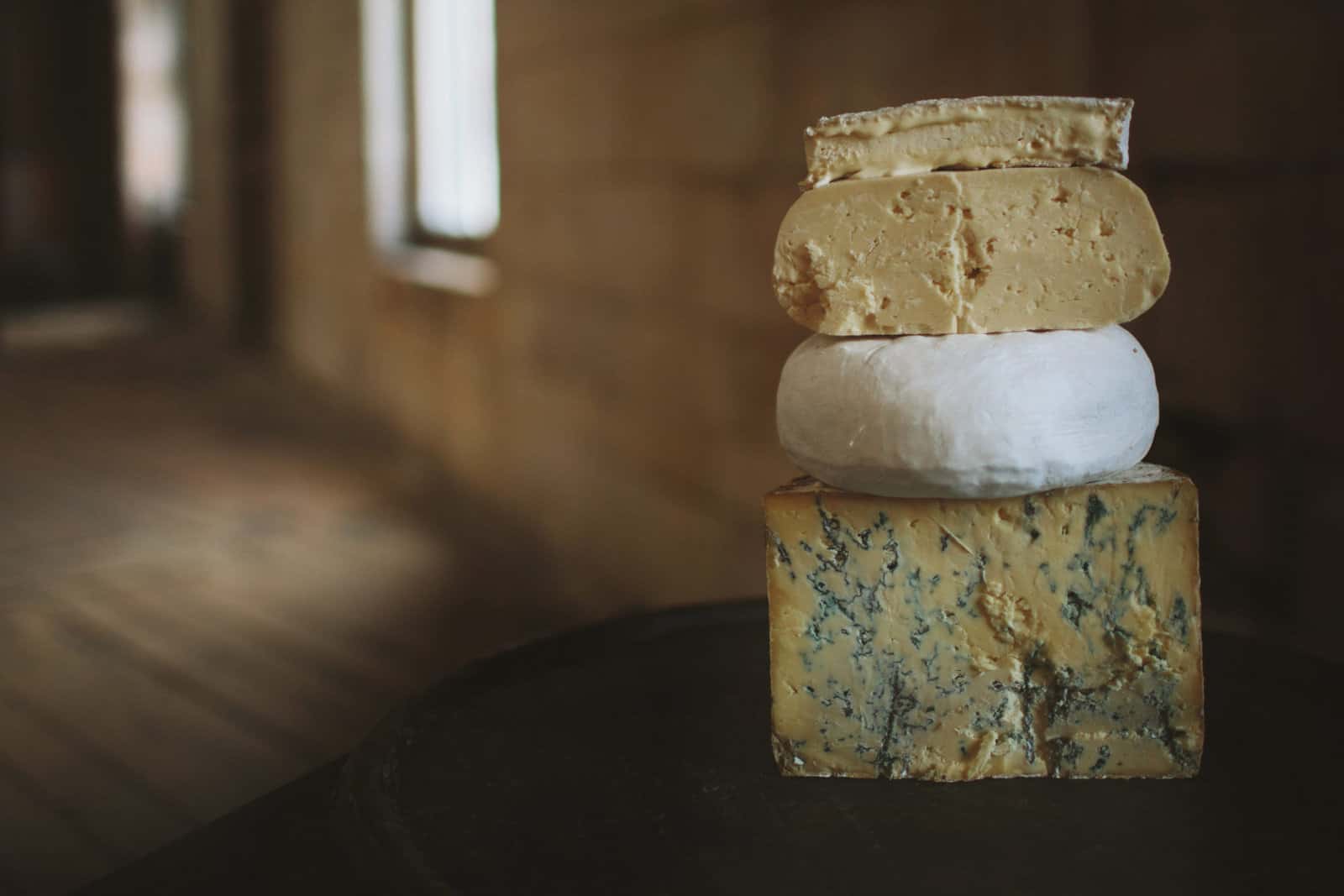
Of the top 10 culinary reasons to visit New Zealand, artisan cheese sits below rare native Manuka honey, above eating cultivated kiwifruit, and right on par with sipping wines that don’t make it out of the country at the same rate as Marlborough Sauvignon Blanc does.
To understand the cheese landscape of this South Pacific dual-island nation, consider the numbers. The Māori, indigenous Polynesian people who have lived on mainland New Zealand since the 1600s, did not traditionally make cheese. In 1814 missionaries introduced cows to the island and they flourished in the lush, temperate climate. In 1871 commercial cheddar production began on the South Island’s Otago Peninsula. Today, shipments of 44-pound boxes of block cheddar from New Zealand’s largest dairy conglomerate, Fonterra Cooperative Group Ltd., account for most of the country’s $2.2 billion cheese export tally.
If you want to sample artisan cheese made by the country’s 40-odd small makers, your best bet is to book a flight. Prohibitive export fees and a strong domestic market means they sell all their cheeses close to home.

New Zealand cheesemakers are producing the types of cheeses the rest of the world knows well, says Simon Berry, managing director of Whitestone Cheese Company in Oamaru on the South Island. Established in 1987, Whitestone is one the country’s older artisan cheesemakers. “We tap into the high quality of the milk produced here and put our own spin on the traditional techniques,” he says. Barry and Whitestone head cheesemaker Chris Moran tracked down a strain of Penicillium roqueforti native to New Zealand. They found it in a pile of hay, named it 45 South Blue, and use it across the company’s line of highly decorated blue cheeses.
What excites Dan Jennings— director of the Artisan Cheese Hub in Auckland—about his country’s cheese scene is its untapped potential. To create a virtual cheese tasting for potential visitors, Jennings divided his country geographically so tasters can “get a sense of terroir.”
Mahoe Farmhouse Cheese’s Very Old Edam is a 10-month aged Dutch- style farmhouse cheese made with organic milk in the picturesque Bay of Islands region. Jennings describes this crowd pleaser as having a white stone fruit sweetness, followed by nuttiness and gentle acidity.
In the Waikato region, septuagenarian Dutch emigree Albert Alferinke adds the leaves of indigenous plants such as peppery horopito and herbaceous kawakawa to younger goudas to create what Jennings calls “uniquely New Zealand cheeses.” Alferinke’s aged gouda, which has classic caramel notes and the crunch of tyrosine crystals, is a must-try, Jennings says.
He also raves about Mount Eliza Blue Monkey, made by Chris and Jill Whalley in the Bay of Plenty—a region known for dairy farming. This Stilton-inspired cheese has immediate punch but is balanced in salinity, he says. “It is aesthetically stunning with its blue-green marbling and texturally is reminiscent of butter. No chewing necessary.”
New Zealand’s bloomy-rind cow’s milk cheeses tend to be a far cry from their originators in France, Jennings says. The best he’s found is the brie from Little River Estate in Nelson, on the South Island near Tasman Bay. “[It] has just a hint of mushroom and earthiness but texturally it is gorgeously creamy.”
Some of the country’s best goat’s milk cheeses are made in the winery-rich Hawke’s Bay and Wairarapa regions, both of which have a Mediterranean climate. Jennings especially likes Nieuwenhuis Farmstead Cheese’s Poukawa Fog, whose “wrinkly geotrichum rind hides a thin layer of ash and a lovely creamy center full of elegant goat tang.”
For a final stop, he suggests finishing with one of the country’s funky offerings. Thorvald’s Sheep Milk Devotion, made near Nelson, is a silky reblochon-style with a pungent farm-yard aroma. “At its peak it is New Zealand’s best washed-rind cheese,” Jennings says.




